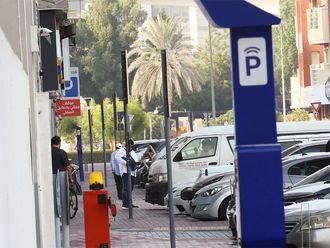More than 800,000 people use public transport in Dubai everyday and a majority pass through major transport hubs daily.
“These hubs have allowed providing a much easier mobility of people around Dubai. The hubs have played a major role in keeping the wheels moving as 800,000 people benefit from the network daily,” said Nasser Abu Shehab, Director Strategic Transport Planning, at the Roads and Transport Authority (RTA).
But travelling around Dubai was not always like this until a few years ago. There were the popular abras that plied on the Dubai Creek as well as a decent service of bus, but the transport system struggled to carry the burgeoning population of Dubai.
Transporting in excess of 500 million passengers in five years, the mass transit system has quickly become the most popular and convenient medium to travel in Dubai.
Expansion
Apart from the major hubs, metro which is served by 47 stations, is well connected by feeder and urban bus service and onward journeys between buses and metro are counted single trips without the commuters having to pay extra, a perfect example of integration.
With Dubai Tram now operational, the buses and metro now integrate with the new transport mode as well.
The marine modes of transport, particularly the abras, also play a major role, transporting thousands daily.
In 2010, RTA launched water taxis that operate across the creek as well as along the shoreline in Jumeirah, Al Sufouh, Dubai Marina and Mamzar.
Further expanding the marine transport, 100-passenger ferries were launched in 2011, with five the boats plying from Dubai Creek and Dubai Marina.
As many as 14 million passengers use marine transport in Dubai annually.
What started with small rowing boats or abras that transported people across the creek, the city now has one of the most sophisticated transport system in the world.
Here is a look at the various facets of public transport in Dubai.
14% transport share
Dubai’s integrated network of mass transit, which includes metro and buses, water buses and abras as well as trams, covers a 14 per cent transport share in the city up from six per cent in 2006.
2030 goal: RTA aims to achieve 30 per cent transport share.
85%: Buses, metro, tram, marine transport
Complementing each other, the combination of buses, metro and marine transport system now covers around 85 per cent of the emirate’s urban area.
Road network
In 2005, size of the network was about 8,715 lane kilometres and 3,077 centreline kilometres.
In 2014, the network size reached 12,454 lane kilometres and 3,940 centreline kilometres.
50% is the increase in road network since 2005.
Vehicles
One in two people own cars.
854,876 vehicles registered in Dubai in 2007.
1.26 million vehicles registered by the end of 2013.
1.4 million vehicles registered till the end of November.
Public transport
500 million: Public transport ridership in 2013.
Taxis
10,000 taxis operate in Dubai.
Buses
- 1968 : Dubai had 5 buses
- Today: 1,575 buses serving more than 105 routes carrying around half a million people daily.
105 bus routes in Dubai are currently operational.
More than 45 years since that major milestone, Dubai continues to be the pioneer in building modern infrastructure and adopting latest means of mass transit.
Marine
1968: Year in which motorised abras were launched in Dubai Creek.
10,000: Average daily ridership of abra.
2007: Year in which the waterbus was launched in Dubai Creek.
15 waterbuses currently operate in Dubai Creek and Dubai Marina.
5 ferries currently operate across Dubai.
Metro
2009: Dubai Metro, a masterstroke
Dubai’s Public transport network along with its various modes and hubs has grown in leaps and bounds, since then.
The success of the integrated system can be gauged by the fact that in the last few years hundreds of thousands of people shunned their personal cars and opted for the convenience of public transport.
According to RTA, almost 80 per cent of the metro users don’t own cars, which has significantly reduced traffic on roads.
- 500,000: People it now transports daily. The number is going up every day
- 74.2km: Distance covered by the Dubai metro every day.
- 52.1km: Length of the Red line.
- 22.51km: Length of the Green line.
- 500,000: Average daily ridership on Dubai Metro.
- 500 million passengers have travelled by metro since 09/09/09.
- 3 minutes is the train headway during peak hours.
- 62 trains run on the Green and Red lines daily.
- 643: Passenger capacity of a Dubai Metro train.
Tram
- 10.6km: Length of the tram network (Phase one).
- 11 trams and stations in operation currently.
- 405: Passenger capacity of trams.
Traffic congestion
Dh4 billion: Losses incurred by Dubai due to traffic jams before 2005.
Dh73 billion: Savings in time and fuel in the last eight years.











